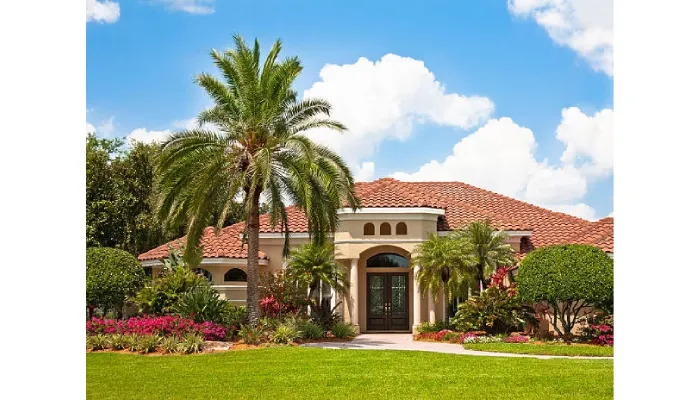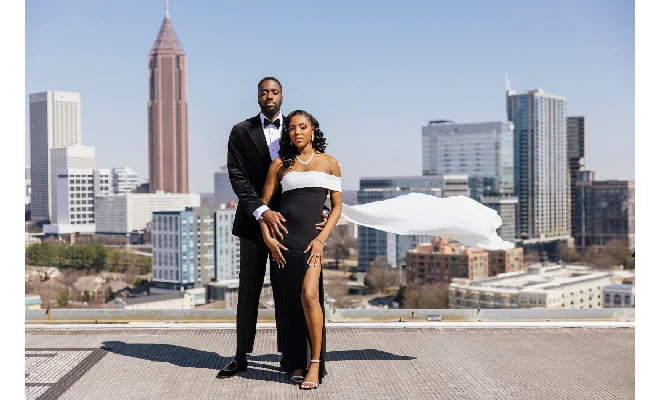
Why Florida Style Home Designs Are Popular?
Florida style home designs have grown popular because they perfectly suit the state’s warm, humid climate. These homes focus on bright, airy spaces with plenty of natural light and materials like tile and stone that resist moisture. Open floor plans with large windows and high ceilings help keep interiors cool by encouraging airflow. The designs also promote indoor-outdoor living, often featuring patios, pools, and screened porches that flow naturally from inside to outside. Bright colors inspired by Florida’s tropical environment add a relaxed vibe. With influences from Mediterranean to Art Deco styles, these homes blend culture, comfort, and lifestyle in a way many find appealing.
Climate Adaptability Shapes Florida Home Designs
Florida style home designs warm and humid subtropical climate plays a key role in shaping its home designs to focus on comfort and practicality. Homes often feature bright, airy interiors with large windows that bring in plenty of natural light while helping to manage heat. To handle the humidity, builders choose materials like tile floors, stone surfaces, and wicker furniture that resist moisture damage. High ceilings and open floor plans are common, promoting better air circulation and naturally cooling indoor spaces. Roofs usually have overhangs and shaded porches to shield interiors from strong sun and heavy rain. Exterior walls are typically finished with stucco or other durable materials suited to withstand Florida’s humid conditions. Landscaping uses native plants that require less water and are hardy against local weather patterns. Flooring often consists of cool surfaces such as ceramic or porcelain tile to offset the heat. Window treatments like shutters or blinds help control sunlight and improve ventilation. Many homes incorporate cross-ventilation designs, allowing breezes to flow through and keep the indoor air fresh. These features combine to create homes that are not only stylish but also well-adapted to Florida’s unique climate challenges.
Seamless Indoor-Outdoor Living Spaces
Florida style homes often blur the lines between indoor and outdoor spaces to take full advantage of the state’s mild climate. Open floor plans typically flow directly onto patios, decks, or verandas, inviting natural light and fresh air inside. Features like sliding or folding glass doors create a smooth transition, making it easy to move between living rooms and outdoor areas. Pools and patios are common focal points, designed to be easily accessible for relaxation and entertaining. Outdoor kitchens and dining areas extend the living space, encouraging social gatherings in a comfortable setting. Screened porches and lanais provide sheltered spots to enjoy the breeze without worrying about insects, while sunrooms offer year-round use protected from the elements. Landscaping is thoughtfully integrated with the architecture, creating a natural flow that connects the indoors with the outdoors. Weather-resistant furnishings, ceiling fans, and lighting enhance comfort and usability, especially in the evenings. This seamless blend of spaces supports Florida’s laid-back lifestyle, making homes feel larger and more connected to nature.
Vibrant Colors Inspired by Nature
Florida home designs are known for their lively use of bright, tropical colors like blues, greens, yellows, and oranges paired with clean whites. These colors draw directly from the coastal environment and the state’s lush natural surroundings, creating a visual connection to the outdoors. It’s common to see walls, doors, and shutters painted in pastel or bold shades that add character and warmth to a home’s exterior. Decorative accents often include natural elements such as seashells, corals, and nautical motifs, reinforcing the coastal vibe. Inside, light neutral tones balance the vibrant exterior colors, bringing a calm and inviting atmosphere. Accent colors frequently take inspiration from local plants and wildlife, making the color palette feel both fresh and rooted in place. Furniture and textiles commonly feature patterns inspired by tropical foliage and ocean life, enhancing the relaxed, resort-like feel that suits Florida’s lifestyle. Beyond aesthetics, exterior paint finishes are carefully chosen for durability to withstand sun exposure and humidity. Bright colors also help homes stand out in neighborhoods, expressing a unique regional identity tied to Florida’s spirited and sunny environment.
Cultural and Historical Design Influences
Florida’s home designs reflect the state’s rich cultural diversity through a blend of architectural styles and decorative details. Mediterranean influences are clear with stucco walls, terracotta roof tiles, and graceful arched windows that evoke a warm, timeless feel. Caribbean and Cuban styles bring bright colors, functional shutters, and open verandas designed to improve ventilation in the subtropical climate. Spanish Baroque and Moorish touches appear in ornamental ironwork and intricate tile patterns, adding a layer of historic elegance. Many historic neighborhoods preserve Victorian-era homes featuring detailed woodwork and inviting porches, highlighting a different period in Florida’s architectural history. The American Arts and Crafts movement also plays a role, emphasizing handcrafted woodwork and simple, functional forms. This mix results in unique neighborhoods where traditional motifs meet modern construction techniques, adapting classic designs to fit the regional climate and lifestyle. Together, these cultural and historical influences create personalized homes that honor Florida’s past while embracing its vibrant, outdoor-focused way of life.
Popular Architectural Styles in Florida
Florida’s architecture offers a rich mix of styles that suit its climate, culture, and coastal lifestyle. Mediterranean Revival homes are well-known for their stucco walls, red tile roofs, arched openings, and wrought iron balconies, creating an elegant and timeless feel. Spanish Style houses also feature stucco and terracotta tiles but often include flat roofs, Roman arcades, and small balconies designed for coastal living. In Central Florida, Victorian homes stand out with their narrow, tall structures, intricate trims, and spacious porches, reflecting the area’s historic roots. Ranch homes provide a more practical approach with single-story layouts and attached garages, favored for easy accessibility and room to expand. For a modern touch, Coastal Contemporary designs emphasize open floor plans, abundant natural light, and sustainable materials, using soft coastal colors to blend indoor and outdoor living. Miami Beach is famous for its Art Deco buildings, which showcase geometric shapes, pastel colors, and decorative details from the 1920s and 30s. Meanwhile, Key West Conch houses are wooden, shotgun-style homes painted in pastel hues, featuring large porches and louvered shutters to promote ventilation in tropical weather. Each of these styles reflects Florida’s unique environment and lifestyle, often complemented by landscaping and outdoor spaces that create a seamless connection with nature.
Luxury Features and Custom Home Details
In affluent Florida communities, homes stand out with high-end finishes and custom design elements that reflect both elegance and comfort. Luxury materials like imported stone, exotic woods, and designer fixtures are commonly used to create a refined look. Interiors often feature bespoke cabinetry and custom furnishings tailored to the homeowner’s taste, enhancing both style and functionality. Outdoor spaces are equally impressive, with large resort-style pools that include spa features, gourmet kitchens, fire pits, and integrated entertainment systems, perfect for enjoying Florida’s mild climate. Smart home technology is frequently incorporated to manage security, lighting, and climate control seamlessly. Architectural details such as coffered ceilings, grand staircases, and custom moldings add a sense of sophistication and craftsmanship. Landscapes are professionally designed with thoughtful lighting, water features, and privacy elements, creating serene retreats. Many homeowners choose to renovate or furnish their homes specifically to embrace Florida’s distinctive lifestyle, combining luxury with the region’s natural beauty and relaxed atmosphere.
Focus on Lifestyle and Wellness
Florida style homes are designed to support a lifestyle centered on wellness and relaxation. These homes often feature airy, open spaces that allow natural light and fresh air to fill the rooms, creating a calm and inviting atmosphere. Large windows and gardens help blur the line between indoors and outdoors, encouraging residents to connect with nature. Floor plans usually emphasize open areas that promote socializing and leisure, reflecting the casual and easygoing Florida way of life. Many homes include wellness-focused spaces like home gyms, meditation rooms, and spa bathrooms, all aimed at supporting mental and physical health. Outdoor amenities such as pools, patios, and walking paths mirror Florida’s active outdoor culture and provide places for exercise and relaxation. Materials and layouts are thoughtfully chosen to foster comfort and calm, balancing elegance with a laid-back vibe. Modern designs also consider energy efficiency and indoor air quality, ensuring year-round comfort while minimizing environmental impact. Flexible spaces accommodate family gatherings, guests, and a variety of activities, making these homes well-suited to an adaptable and health-conscious lifestyle.
Regional Design and Environmental Integration
Florida style home designs are closely tied to their regional environment, blending traditional architectural elements with modern, eco-friendly practices. Coastal homes often feature nautical themes and resort-style touches that reflect the state’s waterfront lifestyle, creating a sense of place that feels natural and inviting. Builders use sustainable materials like reclaimed wood, bamboo, and low-impact concrete to reduce environmental footprint while enhancing durability against Florida’s climate challenges. Hurricane-resistant features such as reinforced windows, impact-resistant roofs, and elevated foundations are standard, addressing the risk of severe storms and flooding. Landscaping choices focus on native plants that require less water and support local wildlife, helping conserve resources and maintain ecological balance. Home orientation and design take advantage of natural ventilation and shading to reduce reliance on air conditioning, improving energy efficiency and indoor comfort. Many new homes pursue green building certifications, reflecting a growing commitment to sustainability. This integration with Florida’s unique environment not only boosts a home’s resilience but also enhances its aesthetic appeal, creating spaces that feel connected to the landscape and weather patterns. The regional approach ensures that Florida homes are equipped to handle local conditions while offering a relaxed, coastal lifestyle that blends the old with the new.
Resource URL:



